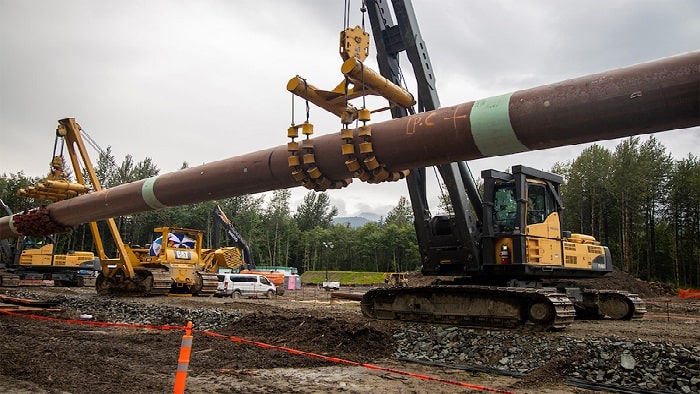In place of the plans to expand the so-called MidCat pipeline across the Pyrenees, which France opposed, Spain, Portugal, and France said on October 20th that they would construct a sea-based pipeline to transport hydrogen and gas between Barcelona and Marseille.
According to Portuguese Prime Minister Antonio Costa, the pipeline, known as BarMar, will mostly be used to transport green hydrogen and other renewable gases but will also temporarily permit the transit of a “limited amount” of natural gas to assist in easing Europe’s energy crisis.
As a result of sanctions implemented by the West in reaction to Russia’s invasion of Ukraine in late February, Europe is under pressure from Russia, which has gradually reduced gas flows.
In Brussels, where the three leaders met on October 20th, Spanish Prime Minister Pedro Sanchez told reporters that the pipeline was a response to appeals for cooperation from the European partners in the face of Putin’s intimidation.
Emmanuel Macron, the president of France, stated that it was absolutely essential that Europe remain unified. The BarMar ends a standoff between Spain and Portugal, which also wanted to extend the MidCat pipeline so they could sell gas to central Europe, and France, which said the pipeline would take too long to build to solve short-term supply problems.
One of Europe’s oldest roadblocks has been broken down, which is wonderful news, Costa added.
According to a joint statement, Spain and France also decided to find and work on further links between their national grids as well as expedite a power link through the Bay of Biscay. The three leaders agreed to get together once more on December 9 in Alicante, Spain, to decide on a schedule for construction and how it would be funded.
Spain and Italy had previously discussed the notion of constructing an underwater pipeline connecting the two nations, despite opposition from France.
In the interim, it pushed France to approve the MidCat project, which called for building a pipeline that would have extended 100 km (62 miles) to the French border. While France claimed it anticipated the work would take several years, Spain maintained that the pipeline extension could be finished in less than a year.
According to consulting firm Wood Mackenzie, Spain was second only to the US in the first quarter of 2022 in terms of the percentage of green hydrogen investment announcements made globally. Iberdrola, which is constructing Puertollano in central Spain with the largest green hydrogen plant in Europe, refused to respond to the pipeline news.
Oil and gas company Cepsa is one of three Spanish firms creating green hydrogen, and it plans to invest 7-8 billion euros ($7.8-8.9 billion) in converting its operations to low-carbon power sources by 2030. The pact, according to Cepsa CEO Maarten Wetselsaar of Reuters, puts Spain at the centre of the continent’s strategy to shift away from Russian energy. In the future EU hydrogen market, Spain and Cepsa can become key actors, offering transition to renewable energy and energy security at the same time, he said.
Regarding natural gas, Spain has six ports, three storage facilities, and the ability to import liquefied natural gas and transform it into gaseous form. Portugal only has one of these. The Iberian peninsula’s consumer gas demand has been lower than anticipated due to an abnormally warm autumn, so they are all close to capacity.
With a capacity to regasify 33% of all LNG and 44% of all LNG storage, Spain has the highest yield in the European Union. Spain, which also obtains piped gas from Algeria, receives LNG from a number of important suppliers, including the United States and Nigeria. Since the storage terminals are full and there is no pipeline capacity to transport the gas to other regions of central Europe where there is demand, gas prices in the Iberian Peninsula dropped to their lowest levels in almost six months.
Russia’s decision to restrict supplies has left a gap that needs to be filled, and nations like Germany that have historically been more dependent on Russian imports are looking for a variety of options.
According to a contract intended to help both nations deal with current energy supply issues, Germany on October 20th received the first direct gas shipments from France through a pipeline link, according to the French grid operator GRTgaz. As per GRTgaz, France will initially provide 31 gigawatt-hours per day using a pipeline in the Moselle region, which will reduce its reliance on Russian imports relative to its eastern neighbour because the majority of its demands are met by LNG exports and supplies from Norway.





































